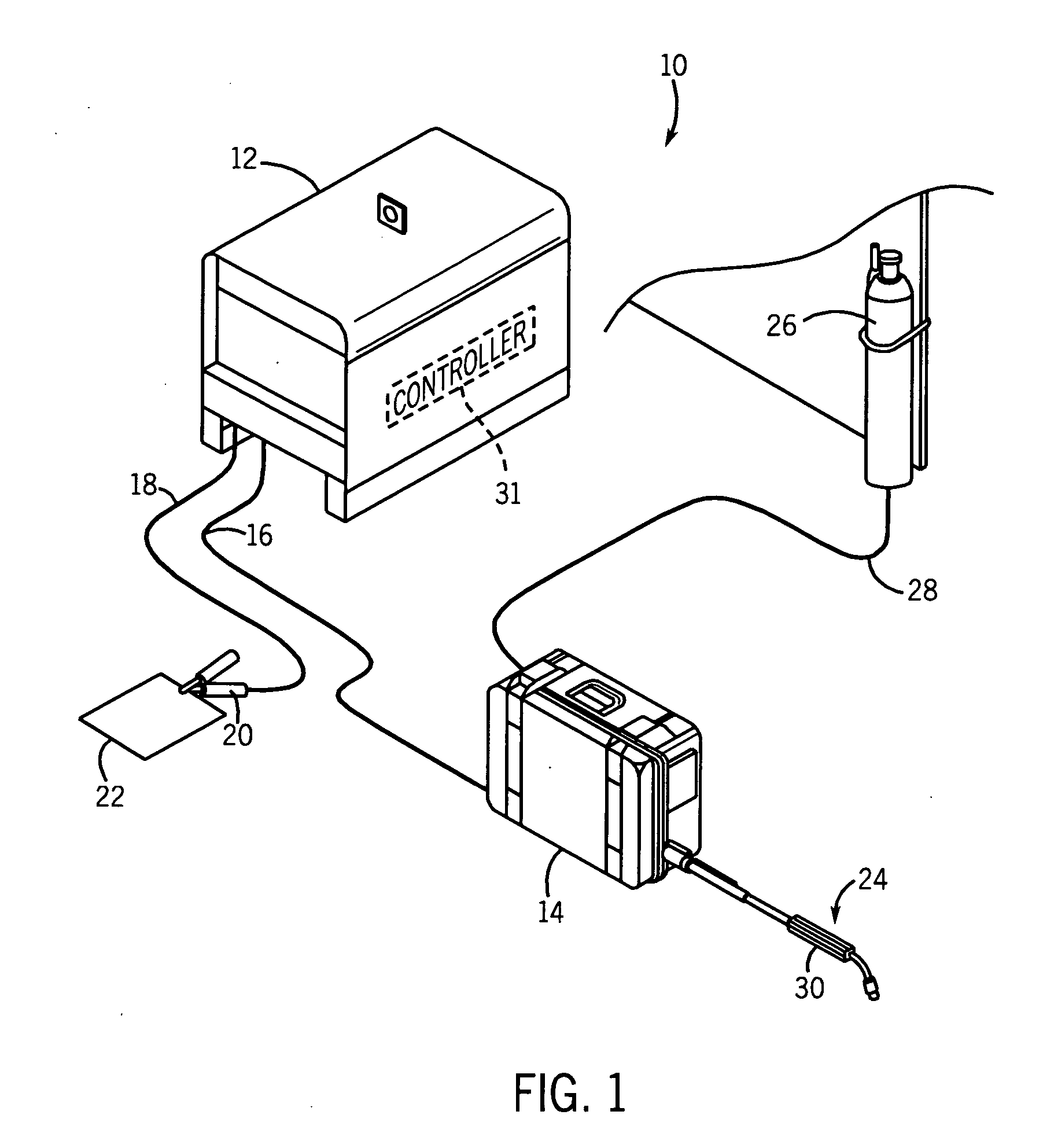Method and system of welding with adaptive crater fill control
a technology of crater filling and control, which is applied in the direction of arc welding apparatus, welding equipment, manufacturing tools, etc., can solve the problems of crater filling control, affecting the integrity of fusion, damage to the weld, etc., and adding time to the welding process. , to achieve the effect of reducing the time of crater filling
- Summary
- Abstract
- Description
- Claims
- Application Information
AI Technical Summary
Benefits of technology
Problems solved by technology
Method used
Image
Examples
Embodiment Construction
[0020] Referring to FIG. 1, a MIG welding system 10 includes a welding power source 12 designed to supply power to a wire feeder 14 through a weld cable 16. The power source is designed to run in one of a number of modes including constant voltage (CV) and constant current (CC). Also connected to the power source is a secondary work weld cable 18 that connects the power source to a clamp 20 designed to connect cable 18 to workpiece 22. Also connected to wire feeder 14 is a welding gun or torch 24 configured to supply consumable welding wire to a weld. Welding system 10 may further include a gas cylinder 26 connected to wire feeder 14 such that shielding gas can be provided through gas hose 28 for the MIG welding process. It is contemplated that the gas cylinder may be mounted to or in either power source 12 or wire feeder 14.
[0021] Power source 12 is designed to condition raw power supplied from a utility line or engine driven power supply and output power usable by the welding pro...
PUM
| Property | Measurement | Unit |
|---|---|---|
| temporal length | aaaaa | aaaaa |
| threshold | aaaaa | aaaaa |
| energy | aaaaa | aaaaa |
Abstract
Description
Claims
Application Information
 Login to View More
Login to View More - R&D
- Intellectual Property
- Life Sciences
- Materials
- Tech Scout
- Unparalleled Data Quality
- Higher Quality Content
- 60% Fewer Hallucinations
Browse by: Latest US Patents, China's latest patents, Technical Efficacy Thesaurus, Application Domain, Technology Topic, Popular Technical Reports.
© 2025 PatSnap. All rights reserved.Legal|Privacy policy|Modern Slavery Act Transparency Statement|Sitemap|About US| Contact US: help@patsnap.com



